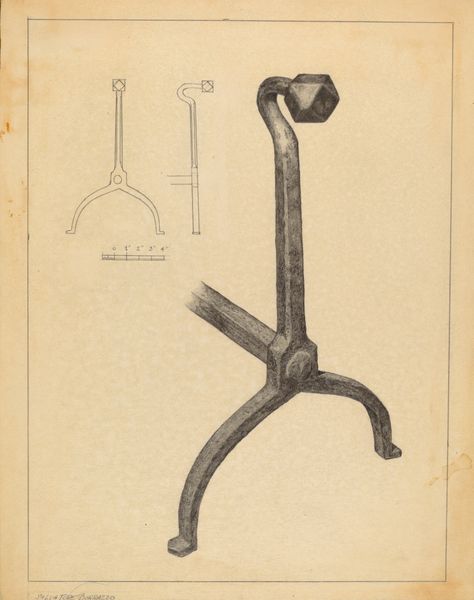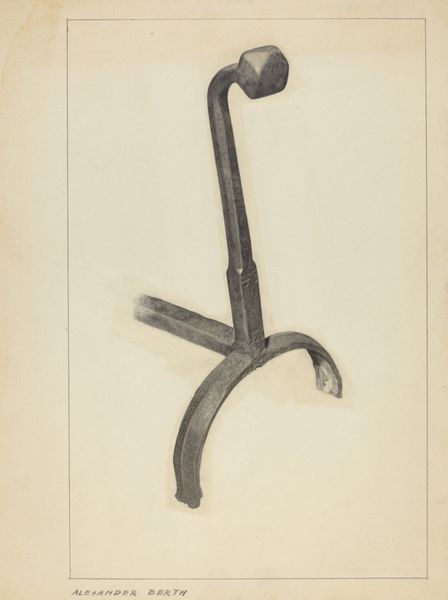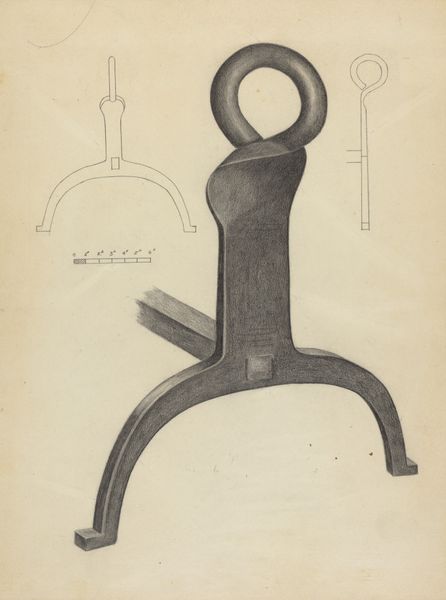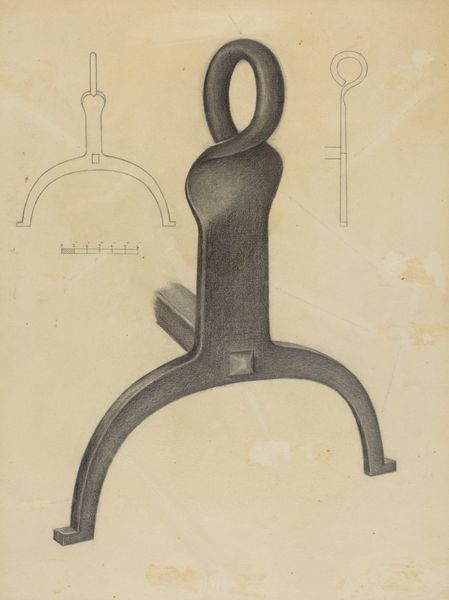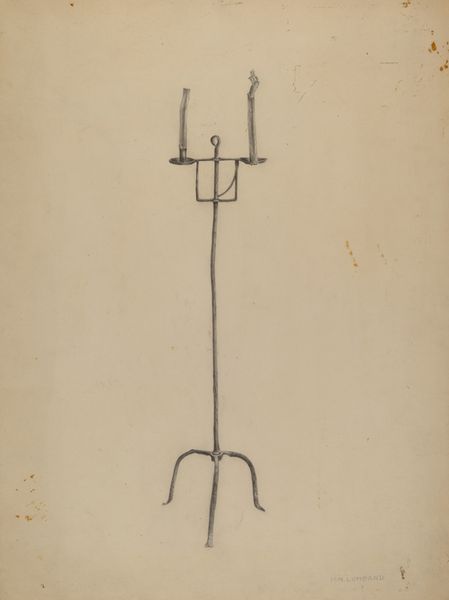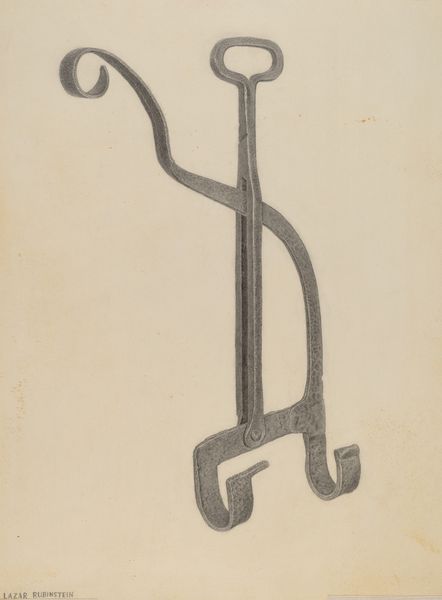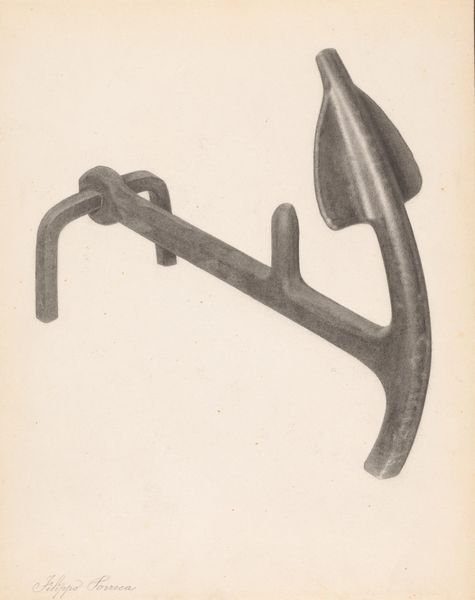
drawing, pencil, graphite
#
pencil drawn
#
drawing
#
form
#
pencil
#
line
#
graphite
#
academic-art
#
realism
Dimensions: overall: 30.5 x 22.8 cm (12 x 9 in.) Original IAD Object: 18" high; 12 1/2" wide
Copyright: National Gallery of Art: CC0 1.0
Curator: Here we have "Andirons", a drawing created by Gerald Bernhardt between 1935 and 1942, using graphite and pencil. It depicts two studies of fireplace andirons. What are your first thoughts? Editor: My initial impression is of utilitarian solidity rendered with surprising tenderness. It’s almost a love letter to functional design. There's a weight and grace to it. Curator: The choice to render this everyday object with such precision and care speaks to the inherent value we place, or *should* place, on well-made tools and the spaces we inhabit. Fire, as a controlled and domestic element, takes on a ritual significance here, doesn’t it? Editor: Absolutely, and I see a fascinating tension between the industrial age and a primal domesticity. Andirons tame the fire, shaping the very core of the home, yet this pencil drawing reminds us how close we are to fundamental elements. There's also a nostalgic aspect, reflecting back to when fire was not an abstract thing, mediated by electric switches. Curator: And consider the geometric solidity against the subtle, almost anthropomorphic curves of the feet. The contrast invites contemplation, asking us to pause and really consider the form. This is a reminder that forms have cultural echoes, that they tell the stories of human endeavors to shape their environment and reflect shared needs. Editor: Exactly! The geometric shape at the top almost seems totemic, reminding me of ancient artifacts or monuments. The placement of the secondary andiron drawing in the upper right feels deliberately considered. There is, almost, a family history happening here on a single page. I wonder if these andirons ever stood side by side? Curator: Yes, and think about the political context, as well, with industrial manufacture increasingly part of everyday experience. Such drawings, and the choice of object to memorialize through image-making, invites analysis on how Americans understood form. The drawing captures the period's push for function, durability and grace, all hallmarks of its design culture. Editor: Reflecting on the sketch itself, I'm drawn to the academic art lineage shining through – it makes us confront our current ideas about functional items that tend to have short lifespans and immediate discardment. There's an undercurrent that feels radical for our time. Curator: Indeed. In this image, a tool speaks, or rather sings to us from a time that still valued those principles. Editor: Ultimately, Bernhardt's image feels profoundly symbolic: it presents art as more than representation; art is memorial, advocacy, and critique.
Comments
No comments
Be the first to comment and join the conversation on the ultimate creative platform.
